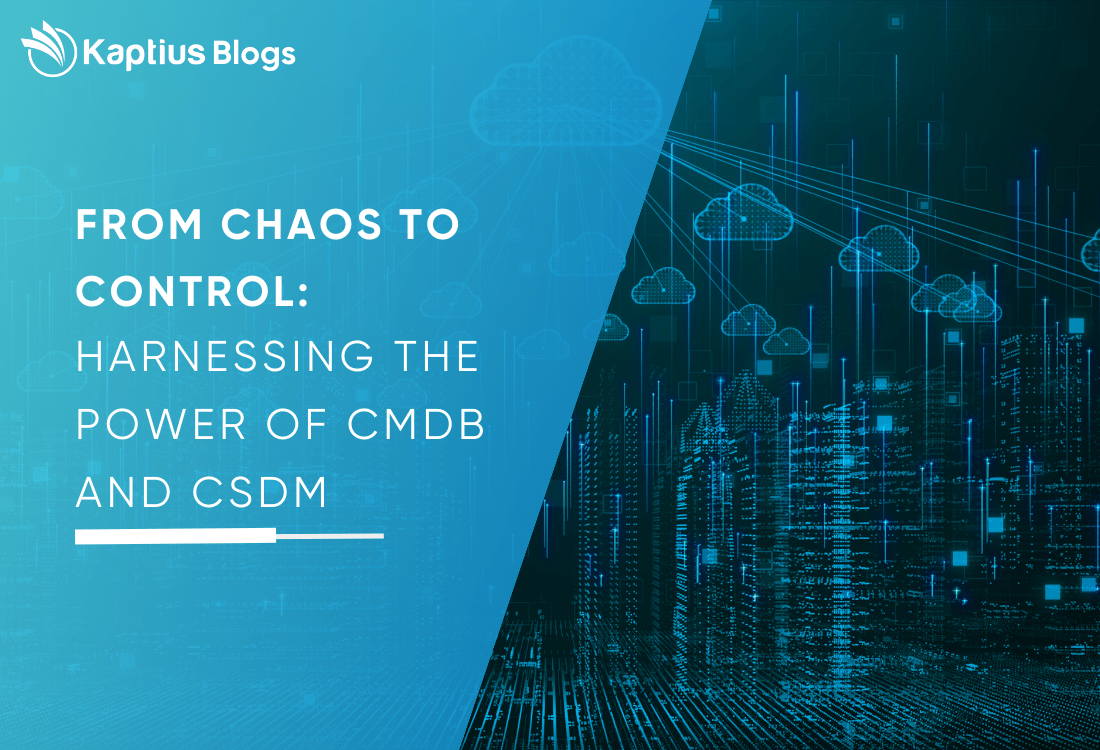The complexities of IT infrastructure, configurations, and interdependencies frequently lead to a disordered data environment. ServiceNow’s Configuration Management Database (CMDB) and Common Service Data Model (CSDM) provide structured solutions to organise and standardise IT data. In other words, CSDM and CSDM are ways to turn chaos into manageable order. Here is a quick guide to how CMDB and CSDM can help you and your business.
Understanding CMDB And CSDM
The Configuration Management Database (CMDB) is a centralised repository that stores all the key information about an organisation's IT infrastructure. This includes details about assets, configurations, relationships, and dependencies. It achieves this by capturing detailed information about configuration items (CIs), such as servers, software, and network devices.
The Common Service Data Model (CSDM) is a pre-built data model within ServiceNow. It is used for the systematic organisation and standardisation of information related to IT services. CSDM establishes a structured framework for modelling different components of IT services, including applications, services, and infrastructure components.
How CMDB And CSDM Improve Business Processes
Here are five examples of specific ways implementing CMDB and CSDM can help improve business processes.
Easier Change Management
The CMDB and CSDM provide a clear, structured and standardised view of the IT landscape. This enables organisations to assess, plan, and implement changes with precision. It therefore optimises IT service delivery and helps to minimise disruptions.
Businesses can use CMDB to analyse the configuration items (CIs) and their relationships. By gaining insights into potential impacts, dependencies, and risks, IT staff can perform a much more thorough and realistic impact analysis.
Leveraging CSDM enhances the completeness and accuracy of data in CMDB. The pre-built data model standardises the depiction of IT services and their components.
This standardisation makes data input, validation and analysis much easier. It therefore helps to ensure that changes to service components are managed uniformly and that relationships are well-defined.
Efficiency And Control
By providing a unified view of assets, configurations, and relationships, CMDB streamlines processes, reducing manual efforts and minimising errors. At the same time, CSDM, as a pre-built data model, standardised representation of IT services. This ensures consistency and simplifies service delivery. It therefore facilitates efficient management of service components and their interdependencies.
Promoting Collaboration
The use of CMDB and CSDM encourages the development of centralised information hubs with a common language and structure. These help to facilitate effective communication between individuals and teams. This in turn facilitates collaborative decision-making and problem-solving. It therefore enhances efficiency and control across the entire IT landscape.
Developing accessible, centralised information hubs may have benefits in other areas of the business too. For example, customer service, training and marketing departments may all be able to leverage these resources in various ways.
Data Accuracy And Integrity
CMDB helps maintain the integrity of IT data by enforcing standards and policies for data entry, validation, and reconciliation. CSDM defines clear structures and relationships between service elements. It therefore facilitates data normalisation and validation processes.
This standardised approach ensures consistency and coherence in data representation. It therefore minimises, or even eliminates, discrepancies and inconsistencies across different service components.
The accuracy and integrity of data can be improved even further by the implementation of rigorous governance practices. These should be regularly reviewed and, when necessary, updated to reflect relevant changes.
Transformation Of It Operations
Both CMDB and CSDM contribute to maintaining the integrity of IT data. This establishes a foundation of trustworthy information upon which organisations can base their operational and strategic decisions.
Together, CMDB and CSDM empower businesses to transition from reactive and chaotic IT environments to proactive, controlled operations. They facilitate informed decision-making, risk reduction, and alignment of IT services with business objectives.
Kaptius specialises in transforming complexity into clarity, ensuring your organisation can not only adapt but thrive in the ever-evolving digital arena. Are you ready to harness the full power of CMDB and CSDM, turning potential disruptions into your strategic advantage? Connect with Kaptius today, and let us embark on this transformative journey together.
Image Source: Canva




